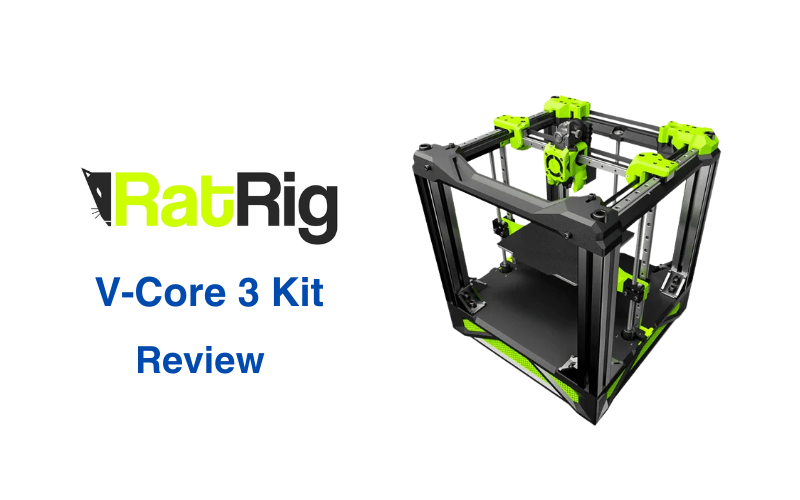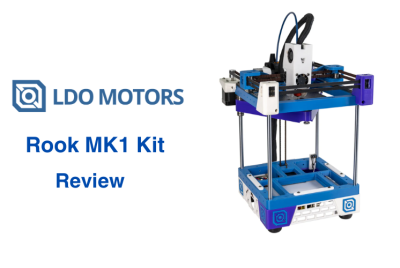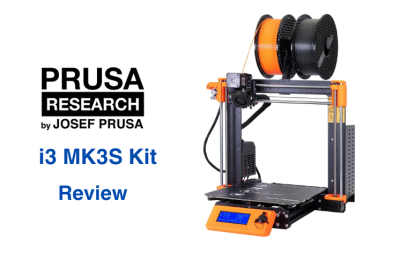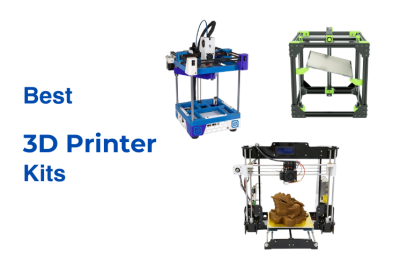Rat Rig V-Core 3 Kit Review
Rat Rig is known in the DIY maker world for giving people the tools to build exactly what they want, rather than sticking to off-the-shelf solutions. Based in Portugal, they’ve made a name for themselves by focusing on customizable kits for 3D printers, CNC machines, and other creative projects. Instead of handing you a fully assembled machine, they give you a solid framework and let you take it from there.
The V-Core 3 is one of their flagship products, built around a CoreXY motion system. It’s not your typical plug-and-play 3D printer—it’s a kit that you assemble and customize yourself. This makes it perfect for anyone who loves the process of building and tweaking their printer to get the best possible performance. With options for different sizes and features, the V-Core 3 lets you create a machine that’s as unique as your projects.
In this review, we’ll go over everything you need to know about the Rat Rig V-Core 3 Kit. We will cover the assembly, design, and what upgrade you can print for it.
Assembly
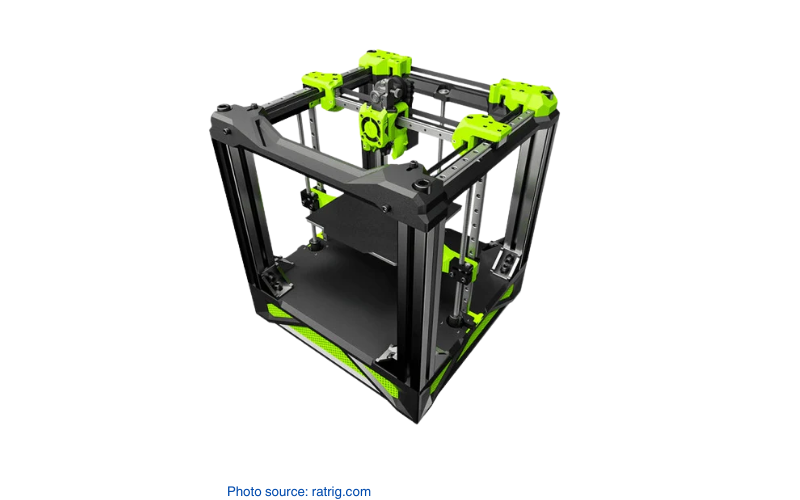
Putting together the Rat Rig V-Core 3 is an experience designed for those who enjoy a hands-on approach. It’s not a quick weekend project, but the detailed assembly process is what makes this kit so appealing to tinkerers. The kit arrives as a collection of high-quality components, including aluminum extrusions, brackets, screws, and printed instructions. The modular design ensures that every piece fits together securely, creating a sturdy frame once assembled.
What sets the V-Core 3 apart from other DIY kits is the level of control you have during assembly. You’re not just following instructions—you’re learning about the machine as you build it. This hands-on process allows you to fine-tune parts like the CoreXY belt system and ensure everything is aligned properly. While this can be a time-intensive process, many users see it as a chance to deeply understand the machine and make it perform exactly how they want.
Rat Rig provides extensive documentation and a supportive online community to help you through the build. Even so, it’s important to note that this kit isn’t for complete beginners. You’ll need some basic tools, patience, and an understanding of 3D printer mechanics to get through the process. The end result is a printer built to your specifications and assembled with your own hands. Something that’s as rewarding as it is functional.
Design

The Rat Rig V-Core 3 keeps things simple and practical. It’s built with aluminum extrusions so the frame is sturdy enough to handle high-speed printing without shaking all over the place. The open layout makes it easy to reach everything, which is great when you’re assembling, upgrading, or fixing something. It’s not flashy, but it’s polished and it gets the job done and leaves plenty of room for you to make it your own.
One thing people love about the V-Core 3 is that you can pick the size that works for you. Rat Rig has different options for build volume, so if you’re printing small parts or going big, there’s a version for that. Plus, the frame is strong enough to handle upgrades. Like adding an enclosure or trying out a fancy hotend or tool changer down the line.
They’ve also thought about cable management, with mounts and brackets included to keep things neat. It’s open design so the printer parts aren’t as protected, but it makes tweaking or troubleshooting way easier.
What You Get After the Assembly
Once you’ve finished building the Rat Rig V-Core 3, what you have is a seriously capable CoreXY 3D printer that you’ve customized from the ground up. Here’s what it brings to the table:
- CoreXY Motion System: The CoreXY setup is known for smooth and efficient movement, which means you can print faster without losing quality. It’s a great option for those who want speed and precision in their prints.
- Strong Aluminum Frame: The printer’s frame is made from sturdy 30x30mm aluminum extrusions. It’s the stability to handle high-speed printing without any wobble.
- Custom Build Sizes: Whether you’re printing small pieces or larger projects, the V-Core 3 has you covered. With build volume options of 300x300x300mm, 400x400x400mm, and 500x500x500mm. You pick what works best for you.
- 3-Point Bed System: The printer’s heated bed uses a 3-point mounting system and a thick 6mm tooling plate. This design keeps the bed flat and steady, even when it heats up. So your prints stick well and come out clean.
- Linear Rails on All Axes: Smooth motion is key, and the V-Core 3 uses high-quality MGN12 linear rails to make sure everything runs like it should.
- Improved Z-Axis Control: The Z-axis uses TR8x4 lead screws. Which means you get better resolution and can fine-tune your layer heights for more detailed prints.
- Completely Modular: With the EVA 3 carriage system, you can set up the printer with your choice of hotends or extruders..
Upgrades You Can Print
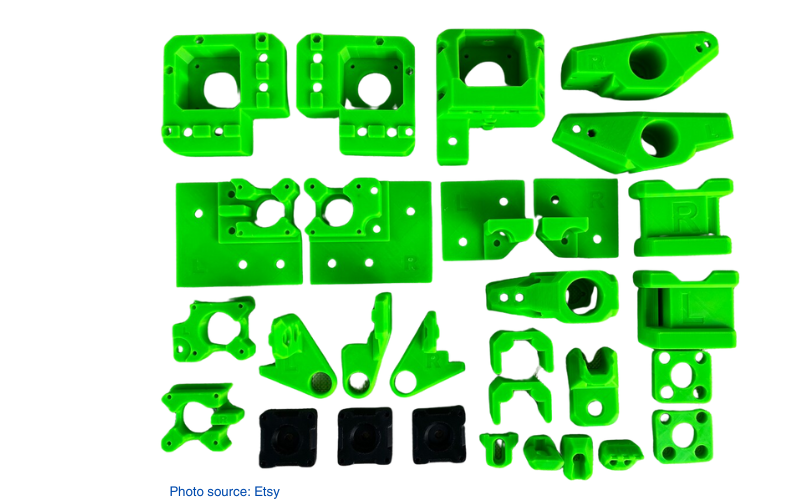
One of the great things about the Rat Rig V-Core 3 is the active community that shares various printable upgrades to enhance your printer’s functionality. Here are some popular mods you might consider:
- Raspberry Pi Mounts: If you’re running OctoPrint or similar software, having a dedicated mount for your Raspberry Pi can keep things organized. Community-designed mounts are available that attach directly to the V-Core 3 frame.
- DC-DC Converter Brackets: To power additional components, a DC-DC converter is often used. Printable brackets help secure these converters neatly within your printer’s electronics bay.
- Cable Covers: Protect and organize your wiring harnesses with printable covers. These not only improve the aesthetics but also prevent cables from interfering with moving parts.
- CoreXY Hybrid Upgrade: The community has developed printable parts to convert the V-Core 3 to a CoreXY hybrid setup, improving performance and print quality.
Final Thoughts
The Rat Rig V-Core 3 is more than just a 3D printer—it’s a project you build from the ground up. It’s made for people who like getting hands-on, learning as they go, and creating something they can call their own. The modular design and open-source approach mean you’re not stuck with a static machine. You can tweak, upgrade, and customize it to keep up with whatever you want to print.
That said, it’s not a quick or easy setup. If you’re looking for something you can plug in and start using right away, this probably isn’t the printer for you. But if you enjoy the process of building and figuring things out, the V-Core 3 is a solid choice. With its sturdy frame, CoreXY motion system, and upgrade-friendly design, it’s a machine that can handle whatever you throw at it.
Even though Rat Rig has moved on to the V-Core 4, the V-Core 3 still holds up. There’s a strong community of users out there. Whether you’re looking for advice, troubleshooting help, or upgrade ideas, you’ll find plenty of support. If you’re ready to dive into the build and make a printer that’s uniquely yours, the V-Core 3 is definitely worth considering.

